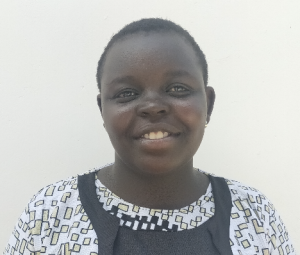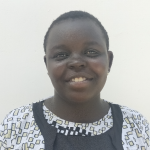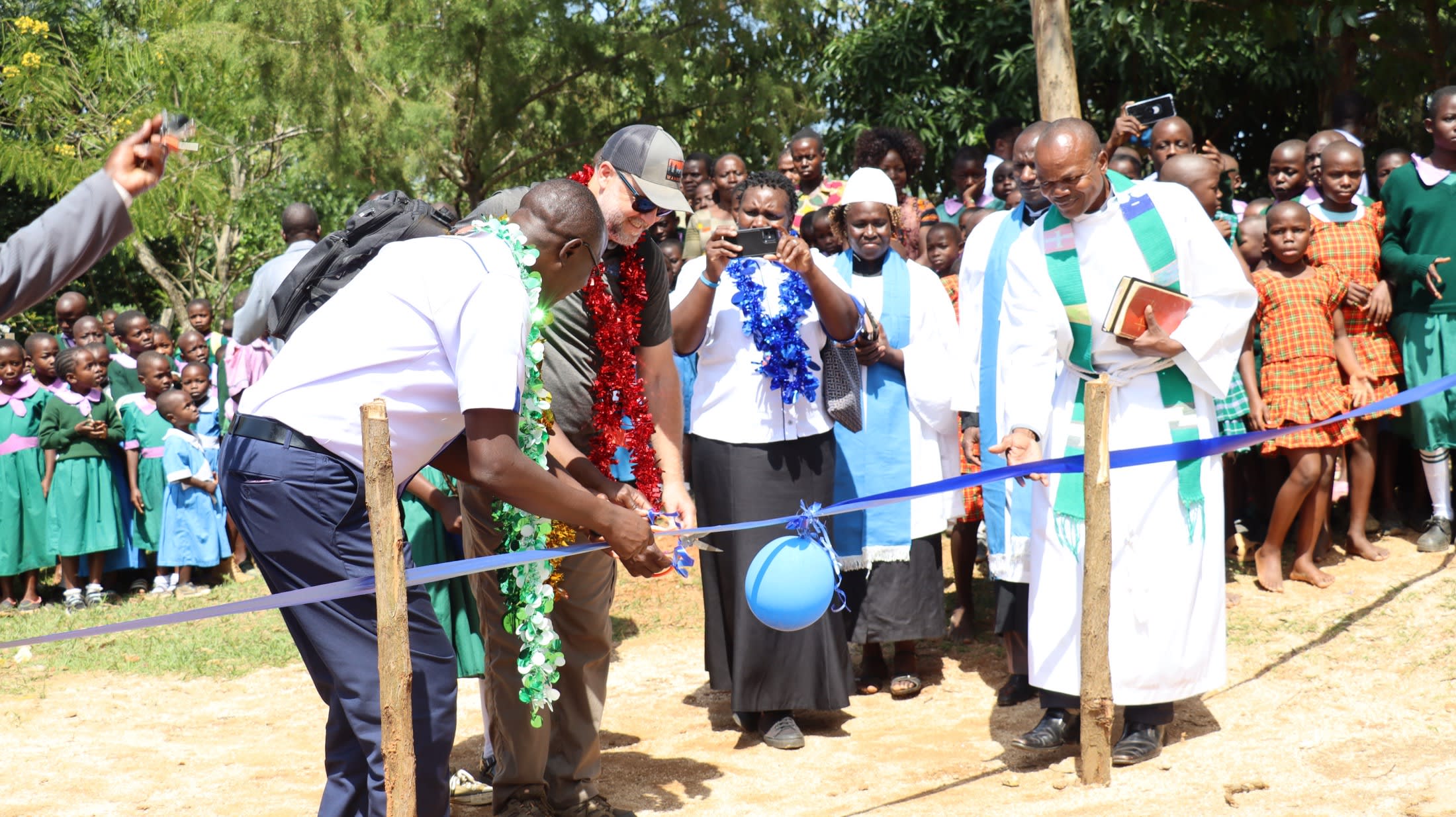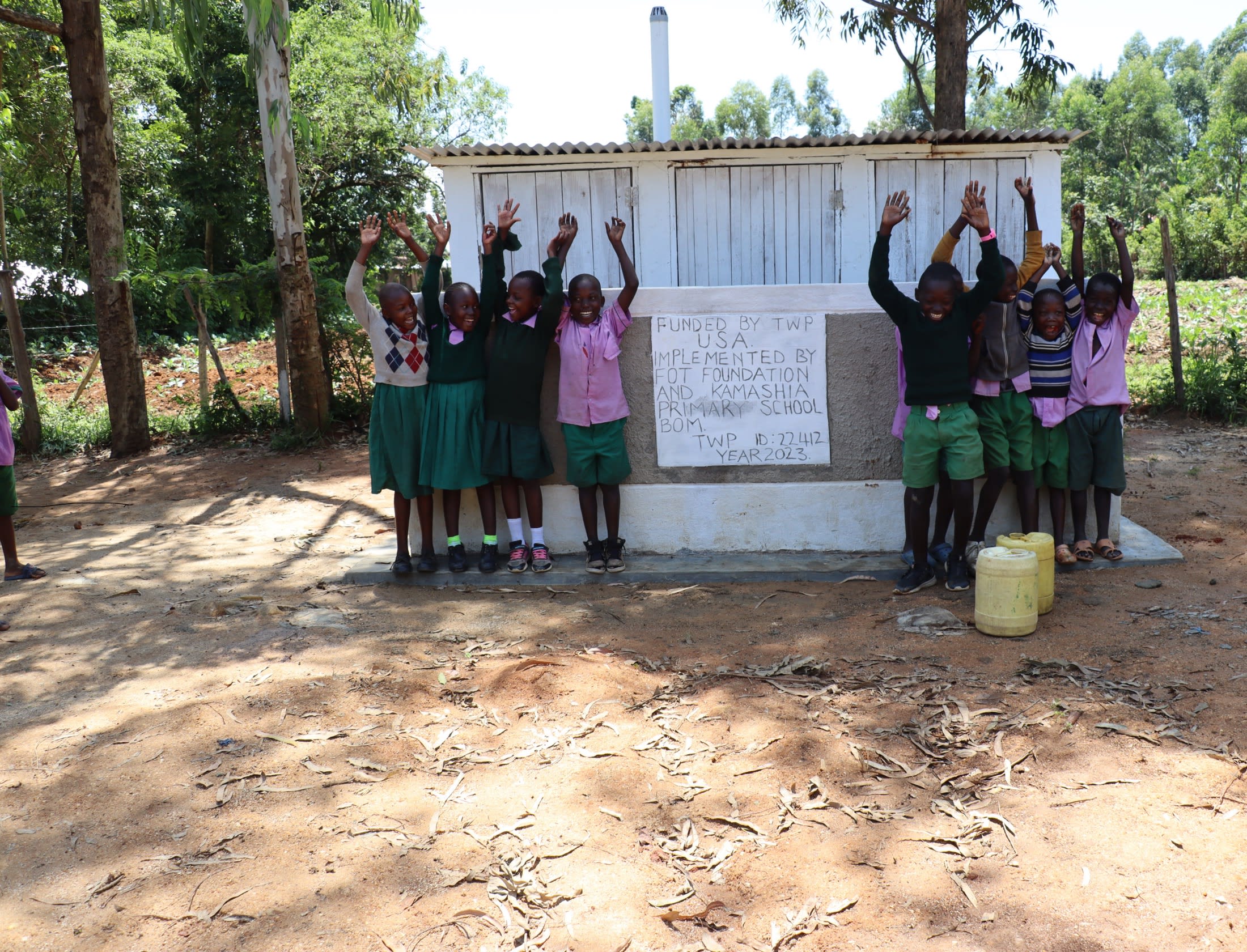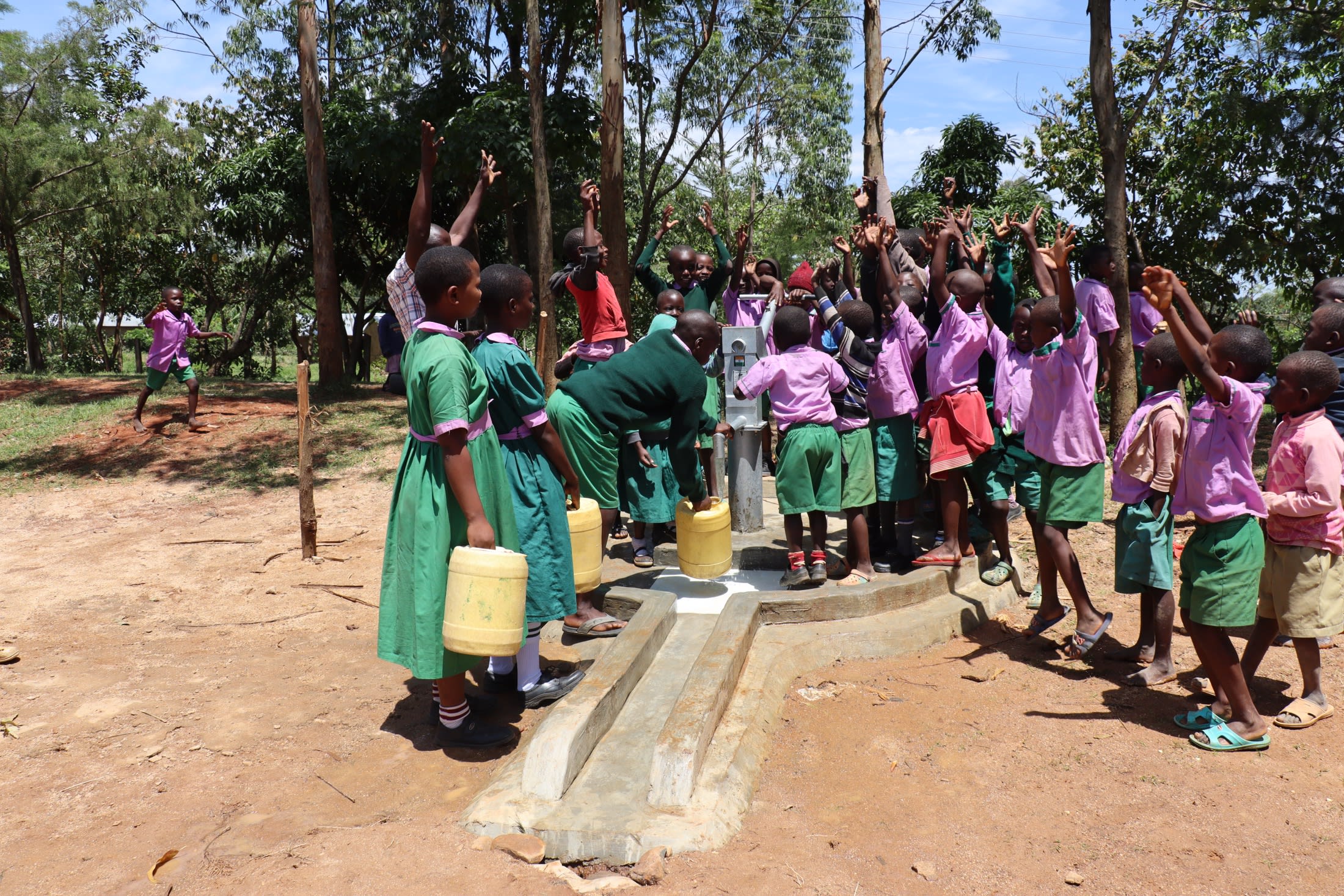The students at Kamashia Primary School are tired of trying to collect enough water to meet their school's needs. With a large population of 811 students and 15 staff, the need for sufficient drinking water and additional water for cooking, cleaning, and maintaining hygiene is overwhelming.

There is a hand-dug well and several small plastic rainwater tanks on the school campus, but neither of the sources can provide adequate, safe water to meet the demand.
"As a teacher, I have to be so careful on the water I drink every day here at the school to avoid a scenario where I have to miss my lessons due to being sick," said 56-year-old teacher Joshua Ooko (shown in the photo below). "I have decided [to] always carry my own drinking water from home to avoid any occurrence that may threaten my life."

During the rainy season, water collects in the rainwater tanks that students use for drinking (shown below). But unfortunately, the tanks are not regularly cleaned, and rotten leaves wash into them from the gutters contaminating the water. Students and teachers alike complain of headaches and stomachaches from consuming it.

Our field officer, Laodia Chebet, reported, "Water from the plastic tanks, though [it] looks clean physically has [a] smell and tiny particles with [a] presence of worm-like organisms which clearly shows that the water is not safe for drinking."
"The current state of water in our school is very saddening because I have to consume bad water," said 10-year-old Sharon A. (in the photo below).

The shallow hand-dug well (shown below) within the school compound is protected, but it does not provide enough water, especially during the dry season when the water table falls drastically and there is no water to pump.

The lack of water means students shoulder the responsibility of finding and collecting water every day for the school to continue operating. They wake up early to find water to bring with them to school, and when that runs out, they are sent out during class time to search for more water.
"I carry books on one hand and water on the other hand, which is tedious to me and makes me come to school late, where the teachers punish us mercilessly," said Sharon.
Sharon recounted a story to our field officer about a time she arrived late for school on a Friday because she was exhausted from carrying water all week, and when she tried to explain to her teacher, it fell on deaf ears. "I accepted the punishment but deep in my heart, was praying for a day that God will do a miracle for us so as to be free from punishment," concluded Sharon.
The school needs a well of its own so students can be freed from the burden of providing water and get back to learning.
What We Can Do:
New Well
We conducted a hydrogeological survey at this school, and the results indicated the water table beneath it is an ideal candidate for a borehole well. Due to a borehole well's unique ability to tap into a safe, year-round water column, it will be poised to serve all of the water needs for this school's large population, even through the dry season.
The school will help collect the needed construction materials such as sand, rocks, and water for mixing cement. They will also provide housing and meals for the work team, in addition to providing local laborers. We will complement their materials by providing an expert team of artisans and drilling professionals, tools, hardware, and hand-pump. Once finished, the school’s students and staff will use water from the well for drinking, handwashing, cooking, cleaning, and much more.
The school and we strongly believe that all of these components will work together to improve standards at this school, which will help lead to better student academic performance and unlock the opportunity for these students to live better, healthier lives.
Handwashing Stations
The student health club will oversee two new handwashing stations we will provide and ensure they are kept clean and in working condition. The club leaders will fill the handwashing stations with water daily and make sure they are always supplied with a cleaning agent such as soap or ash.
VIP Latrines
Two triple-door latrine blocks will be constructed with local materials that the school will help gather. Three doors will serve the girls, and three doors will serve the boys. These new latrines will have cement floors designed to be easy to use and clean. And with a new well right on school property, there should be enough water to keep them clean.
Training on Health, Hygiene, and More
We will hold a one-day intensive training session with students, teachers, and parents. This training will cover a wide range of topics, including disease transmission routes and prevention; personal and environmental hygiene; and the operation and maintenance of the borehole, latrines, and handwashing stations. There will be a special emphasis on handwashing.
Our team of facilitators will use various methods to train, including participatory hygiene and sanitation transformation and asset-based community development. We will initiate a student health club, which will prepare students to lead other pupils into healthy habits at school and home. We will also lead lectures, group discussions and provide illustrative handouts to teach health topics and promote good hygiene practices within the school, including handwashing and water treatment. We will then conduct a series of follow-up training before transitioning to our regularly scheduled support visits throughout the year.
We and the school strongly believe that all of these components will work together to improve standards at this school, which will help lead to better student academic performance and will help unlock the opportunity for these students to live better, healthier lives.



 Rehabilitation Project
Rehabilitation Project












